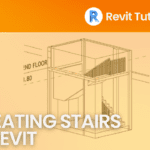Reasons Why 3D Visualization Can Improve Your Architectural Business
- 4 min read
- July 6, 2020
Want to get more clients? Utilizing 3D visualization is key to increasing your leads. Visualizations show what’s possible and help convey your ideas more clearly with images, instead of just words. Everyone in the architecture services industry should definitely include 3D visualizations in their repertoire.
Here are six reasons why visualizations impact both your clients and your business:
1. Humans Gravitate Toward Imagery
“A picture is worth a thousand words,” is thought by some to have originated from the Chinese philosopher Confucius. Others debate that it was an advertiser named Frederick R. Barnhard who actually used it first in a 1921 ad that said, “One look is worth a thousand words.”
Either way, science confirms that this insight is correct. Neuroscientists at MIT discovered that humans can literally process images in the blink of an eye while text takes much longer to process. Research subjects saw new images more than 20 times as fast as vision typically absorbs information.
It explains why visual media performs better than text on social platforms. For example, images earn 2.3 times more engagement on Facebook than text posts. While pictures can be processed quicker, they are still open to interpretation. Choosing one over the other is not a hard and fast rule – it’s actually best to combine the two.
Practice including digital art in your social media and website with some descriptive text to accompany it. This makes it easier for prospective customers to visualize and understand your ideas.
2. Engaging Potential Clients Online
Visualizations allow your audience to gain a foundational understanding of your design vision and a deeper appreciation of your work. Photos of completed buildings are nice, but they show the work of a contractor and others that may have watered down your initial vision. Unless you can show the side-by-side of the initial rendering and a completed photo to prove your original vision came to life, stick to digital art that links directly to your architecture services.
There is nothing wrong with featuring pre-design, conceptualization photos, or schematic design images on your website. For the untrained eye, these might be difficult to understand, so consider mixing in a 3D walkthrough many people can relate to.
Another solid way to gain a website visitor’s trust is by showing what you can do right off the bat. Use 360-degree panoramas to add interactivity to your site and draw the viewer in to participate and see more angles. This kind of image variety helps convert online visitors into leads.
3. Clients Have a Better Understanding of Concept
Another great benefit of incorporating 3D visualizations into your business is that it presents your designs through more efficient means. You are not limited to a 2D sketch, and clients can actually view your vision for both the exterior and interior spaces. Visualizations provide them with a way to appreciate a concept’s depth both literally and figuratively.
There is also the chance to examine every feature of your concept in closer detail. You can add certain effects to promote more realism through the aid of a strong graphics design team. This will help further express the potential of your design.
Utilizing the right tools can also elevate the end result. Online applications such as Shapespark can effortlessly convert 3D models to become virtual walkthroughs. There’s even a virtual reality feature to really immerse the viewer into the design. This kind of tool enables architects to market their designs by:
- Sharing their work across different devices without the need for meetings
- Providing virtual presentations of yet-to-be-constructed properties
- Integrating with other modeling tools they already use
In spite of its availability, you do not need to always provide interactive 3D models. A well-made “fly-through” video would suffice in most cases as it gives the viewer a good understanding of your concept. Just remember, any 3D presentation is notches above a static image.
4. Better Communication Within the Business
Using interactive graphical content refined through 3D rendering is not only for marketing purposes. It can also be utilized for greater collaboration among your teams – especially if you employ remote workers. Their abstract ideas need robust platforms to come to fruition. The complexity of a particular project might be too difficult to explain through email, chat, or digital sketches alone.
Now imagine keeping tabs on simultaneous projects across different venues among various teams. Keeping everyone on the same page is a constant juggling act. Using 3D modeling to initiate your intended designs can guide your teams. Much of the guesswork is left out of the picture. A good 3D render finish should of course be used to complete the presentation.
In addition, 3D visualization can allow your network of architects, artists, and designers to edit a concept in real-time. They can simultaneously introduce improvements to the work without permanently altering the previous version. At the same time, they can present their own adaptation to the team without fear of doing any irrevocable damage. Nothing is final and it is easy to manipulate a design in this space.
Lastly, your team can individually visualize their own ideas and test them through this type of software. It can in a way, allow them to stretch their imagination by employing quantitative and qualitative means
5. Reduced Expenses
Avoidable delays naturally cost money, and they can create unnecessary tension within your team (especially if the delay could have been prevented with more planning). Fortunately, this is where 3D visualization comes in.
Visualizations present a planned design in greater detail and with more accuracy. The client will be able to readily agree or disagree with the concept being presented by the architect. Any desired changes can be implemented and checked before the contractor comes in. Once the building phase begins, the client’s opportunity to implement additional features or changes decreases (not to mention the cost of those changes could be far greater).
Architects and contractors have a long-standing symbiotic relationship. The former has to accurately depict the client’s expected output while adhering to building codes and principles. Contractors, on the other hand, must successfully construct the architect’s concept as it is documented. Both used to solely rely upon complex 2D drawings and measurements to execute the client’s project. This is an area of the business that has been completely revolutionized by 3D visualization.
Any corrections or edits to the 3D model can be changed immediately. There is no need to go back to the 2D drawing board. This not only saves time and money during the design phase but also minimizes unwanted surprises during the build phase. It almost makes it an indispensable aspect of today’s architectural business, especially if you want to remain competitive.
6. Project Approval and Client-Side Marketing
Getting clients to get on board with your vision will be easier when they view 3D visualization models. There is hardly any need for them to sift through page after page of 2D drawings and schematic designs. It can get pretty tiresome after a while, especially for those who have limited background on what they are viewing. Worse, they might even outright misinterpret your 2D renderings and dismiss them altogether.
Government officials will also have an easier time understanding your detailed plan with a 3D model. They would not have to spend too much time trying to understand your concept before giving their approval. Easier review often means quicker approval, which allows your client to start constructing sooner.
Your 3D models also could be used should your client be a real estate developer. The company can present visualizations to its potential buyers during the pre-selling stage of a condominium project. Not everyone can visit the physical showroom. Foreign buyers may want to invest but need to get a general feel for the potential output first. Sending a 3D visualization is the perfect solution (and maybe even more impactful than visiting a showroom).
Any possible modifications to a unit’s interiors can be presented. Prospective buyers can select different wood panel designs to be installed in their finished condo unit, for example. They can mix and match other design themes included by your developer client in a unit’s purchase price. This gives the company an additional marketing tool to sell their project based on your concept.
If the project is well-received, so will your services for existing and future clients.
How to Get Started
There is no doubt that 3D visualization will improve your architectural business. You do not need to hire additional 3D computer graphics staff or purchase expensive graphics design equipment. Consult your existing talent first as they can provide recommendations on what software they are most comfortable using to integrate this feature into your business.
To learn more about this topic click here.

Connect with us!



